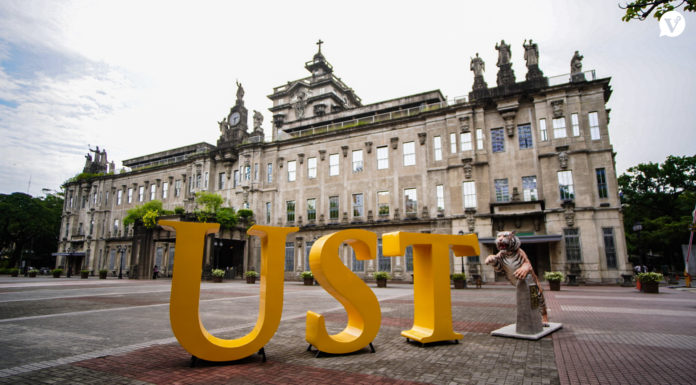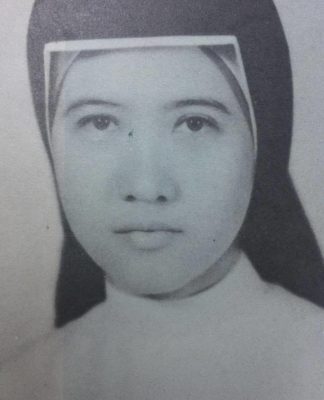UST IS not only the Catholic University of the Philippines with a capital “C.” With its handsome share of international students, it’s also a “catholic”—that is, a global—university.
While many Filipinos, including Thomasians, dream of studying abroad, more and more foreign students say that UST is no less a greener pasture to study in.
The University’s foreign student population is steadily increasing. This semester it has 332, compared with the 223 of the University of the Philippines-Diliman and the 295 of the Ateneo de Manila University. The De La Salle University (DLSU) has some 500 international students.
“UST sends promotional advertisements abroad to draw in international applicants,” Mary Anne Vargas, director of the Office of Admissions, said.
“The whole year, we keep on sending to other countries our UST campaigns,” she said. “Through UST posters, sample application forms, and e-mails, we try to inform and update them about what the University offers to get more international enrollees.”
Vargas said that it is essential to become aware of the latest fad in education to draw students. Among the programs of the University, commerce, science and medicine courses particularly attract foreign students.
The College of Commerce and Faculty of Pharmacy have the most number of foreigners, with 40 foreign students each.
“The science colleges have consistently produced excellent performances for years,” Vice-Rector for Academic Affairs Armando de Jesus said. “In fact, we constantly top the medical board exams.”
De Jesus added that the international students get attracted to the University because of its good curriculum standards. Its Centers of Excellences as declared by the Commission on Higher Education (Ched) include the College of Nursing, the Conservatory of Music, and the Faculty of Medicine and Surgery. Among the Ched’s Centers of Development is the College of Commerce.
“The University’s curriculum sets standards by following the trends of higher education, employing the use of the progressive multimedia technology and the latest edition textbooks,” De Jesus said.
Science attraction
Many foreign students found out about UST through word of mouth. Filipino-American Ronald James Balao, who is now doing his Medicine internship at the UST Hospital, grew up in California always wanting to be a doctor. While searching for a good medicine school, he considered studying Medicine in UST.
“I asked more about UST through the Filipino online community, and I got really positive feedbacks,” Balao said.
Balao added that the presence of parks and pavilions around the campus, particularly the football field, is conducive to study.
Similarly, Godfrey Anijah-Obi, a Nigerian with Filipino blood, was told by a family member that UST excels in science courses.
“My family kept on talking about UST, and I became interested with the school since then,” Anijah-Obi recalls. He is currently a Medical Technology sophomore in the Faculty of Pharmacy.
Foreign students also got wind of UST through reports of the victories of UST students in international events.
Nepalese Pritti Ghilmire said she learned about UST on the Internet.
“As I was browsing on the Filipino network, I saw articles and news photos about UST winning a debate contest,” Ghilmire said. “After being impressed by UST’s records, I told my parents to let me study here.”
Ghilmire is now enrolled in the College of Science.
Rowena Castro, staff supervisor of the Office of Student Affairs (OSA), said the foreign students attest to UST’s good image.
“It’s nice to hear from them that they come here because UST has been recommended by people around their circles,” she said.
Just last school year, UST revived the UST-International Students Association program (formerly known as the UST-Foreign Students Association) that allows international students to interact with Filipino students through acquaintance parties, special classes, and tutorials.
“The best thing we can do is to make them feel at home,” Castro said.
Special classes in Filipino and Philippine Government and Constitution are also provided to expose the foreign students to Filipino society and culture.
“Since they spent their every day interacting with Filipinos, they must know how to blend well to keep away their isolation,” Castro said.
Of the 332 foreign students enrolled, the Koreans number 100, almost twice the number from last year’s 59. There are 88 Chinese students and 50 Americans.
“Although we came from a totally different country and culture, we feel accepted here,” Vitna Kim, a sophomore from the College of Accountancy, said.
Despite the growing number of foreign students, the University has not done enough to market itself to international students, Castro said.
“Although the number of international students is growing steadily, it is just the primary result of the University’s prestigious name,” Castro said.
Unlike DLSU and Ateneo, which provide their foreign students with visas, housing, and country tours, UST provides its international students only with student permits. Castro said the University has a section on the website providing the guidelines and procedures on international admissions.
“In time, we hope to also provide them their visas and housing needs,” she said. R.R. T. Calbay and M.J. T. De Lara
















